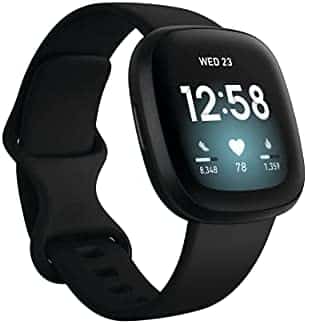Cone Health is a North Carolina-based nonprofit health system serving patients across 150 locations, including five hospitals and more than 120 physician practices.
THE PROBLEM
It had a peer review paper-based process that was inefficient and cumbersome. Due to its outdated nature, physician engagement was not optimal.
One of the biggest issues was the effort required to correctly interpret handwritten documentation, which prolonged the process to complete reviews. This caused delayed results that negatively impacted the quality of care provided to patients.
“The peer review process plays a substantial role in the success of healthcare organizations and the providers on their teams,” said Elisa Haynes, RN, medical staff quality coordinator at Cone Health. “Well-designed peer review programs safeguard quality initiatives, ensure compliance, and directly affect patient outcomes and reimbursement within value-based care payment systems.
“The best peer review programs also foster constructive performance improvement within a fair, efficient and reliable process that aids in the professional growth of providers,” she added.
Technology can reinforce these goals, creating electronic workflows to streamline tasks and ensure no one circumvents policies and procedures.
“Embracing a fully digital peer review process gives providers and reviewers the ability to participate in a review from anywhere at any time, which saves a significant amount of time compared to processes involving in-person meetings and manual operations,” Haynes explained. “Action plans that result from peer review identify positive contributions or opportunities to improve, enabling providers to own the process and engage in it more comprehensively.”
PROPOSAL
Cone Health began the process of phasing out the platform it was using in order to introduce a digitized system. As part of the health system’s LEAN strategy to maximize value and minimize waste, it reinvented its peer review process and the tools to support it to better engage reviewers, reduce costs and clearly identify the outcomes of case reviews.
“In 2020, the COVID-19 pandemic accelerated our timeline to shelve our previous review process,” Haynes recalled. “Starting in 2015, our medical staff quality team managed a transition to end the punitive culture of the review process and replace it with a ‘just culture.’
“This enhanced engagement has created real opportunities for improvement, making reviewers agents of change who take ownership of the process and have an impact on policy.”
Elisa Haynes, RN, Cone Health
“At that time, the team began providing education and coaching to peer review participants, replaced ‘acceptable’ practices with best practices that aligned with the system’s accreditation body, and created a peer review algorithm as a guide for reviewers,” she continued. “Also, interprofessional team involvement was fostered through nursing leadership, pharmacy, advanced practice providers and other disciplines in peer review committees.”
The team also began moving from paper to electronic health records, employing cloud software where Excel spreadsheets had previously been used. In 2018, new software was purchased, and in 2019 providers began training on the software for their roles in committee reviews.
“With approximately 200 active peer reviewers at Cone Health, the transition has been a significant undertaking that has improved physician engagement and the overall peer review process,” Haynes stated. “The impact of the pandemic in 2020 presented new challenges. Prior to that, the medical staff quality team functioned 100% in the hospital setting; but the pandemic forced the team to work from home and attend meetings by video conferencing.
“This rapid transition was well-served by the software being used for digitized peer reviews,” she added. “To continue the digital transformation, in 2021 the quality team consolidated Alamance Regional Medical Center’s peer review platform with their own.”
Previously, the medical center had maintained a peer review system separate from the rest of the health system. The pilot department for the consolidation of the peer review process was obstetrics and gynecology.
“This pilot review process signaled the beginning of a new era at Cone Health to streamline and support systemic electronic process improvement in peer review,” Haynes said. “With these changes, our organization laid the groundwork for the digital transformation of peer review by making outcomes reporting more transparent while maintaining peer review protections under the current statues.”
MEETING THE CHALLENGE
Cone Health chose an enterprise healthcare operations software vendor to digitize the health system’s peer review process. The digitized platform enables team members to now review cases prior to meetings, which allows committee chair members to better prepare and gives reviewers the opportunity to more thoroughly present concerns or accolades.
“Other benefits include faster action plan turnaround, outcomes implemented in real time, increased multidisciplinary member input and improved recredentialing process efficiency,” Haynes noted. “The qualitative metrics used within the interprofessional role of peer review determined the impact of efficiency and identified the benefits of incorporating an electronic application to maximize compliance.
“Electronic documentation clearly aligns the words of reviewers with the peer assignment,” she continued. “In addition, the digital transformation eliminates the need for coordinators or chairpersons to decipher handwriting or recall meeting-based verbal reviews. Cases found to be in line with best practices can be closed by reviewers, while cases that need follow-up require written documentation from the reviewer.”
Put another way, the electronic form initiated a truly factual colleague-to-colleague review, she added.
“As there was no benchmark data to reference for the project, at the outset the medical staff quality team completed 100% of data collection on all reviewers,” she reported. “The team then identified what the threshold, target and stretch data entailed to increase utilization of the electronic peer review process within the timeframe of the meeting date – the threshold was 77%, the target was 82% and the stretch was 87%.
“The team then demonstrated the electronic process to committee members and provided written instructions that outlined expectations moving forward,” she continued. “For example, assignments were to be completed prior to meeting dates, best practice cases would be closed, and cases to be discussed would require documented comments and recommendations.”
Then, when the team piloted a sub-group with four service-line committees, problems related to passwords expiring within 60 days were identified.
“This issue, which impacted committees that met bi-monthly or quarterly, was a significant source of reviewer dissatisfaction,” she said. “Shortly after this, the pandemic began and meetings were canceled. Considering the digital process was tailor-made to operate efficiently during unexpected circumstances, the team was buoyed by the fact that the peer review process was functioning efficiently during the early days of the pandemic.
“Given the changing workplace landscape in early 2020, the team implemented training by posting tutorials on YouTube and setting up one-on-one virtual education sessions for participants who required additional help,” she continued. “At this time, the team implemented the final all-service pilot group by selecting from each peer review committee a consistent reviewer to track quarterly.”
Forty providers were identified to be mentored throughout the year, while the team continued to implement training using the online video tutorials and one-on-one virtual sessions.
“In line with Cone Health’s promise of being ‘Right here with you,’ providers were afforded meeting time to give feedback, and reviewers also shared their struggles and success stories,” Haynes said. “To keep staff and reviewers engaged in identifying and solving problems as they arose, coordinators held weekly huddles to discuss successes, failures and opportunities to improve moving forward.”
RESULTS
Focusing on physician engagement with the peer review process, Cone Health obtained 100% use of the digital platform across the organization, and it has recorded an increase of up to 72% of case discussion in some committees.
“This enhanced engagement has created real opportunities for improvement, making reviewers agents of change who take ownership of the process and have an impact on policy,” Haynes reported. “The organization also has saved costs related to travel time and data collection. Implementation of an electronic application and digital peer review process also maximized compliance within the interprofessional role of peer review.
“Cone Health uses a retrospective peer review process to identify cases for review, which are generally identified by the patient safety committee, reports, referrals and credentialing agenda,” she continued. “Once a referral or case is identified, the medical staff quality committee reviews the case to identify concerns and appropriate indicators.”
The organization consistently has used more than 50 indicators across 13 committees – these include general quality, patient care issues and service-driven indicators. The indicators, which can be seamlessly added within the digital platform, serve as educational tools and as a way to closely monitor concerns related to patient care.
“Cases entered into the digital system contain demographic occurrence dates, concerns/case details and the professional being reviewed,” Haynes explained. “Currently, workflow varies as it relates to the type of committee and a chairperson’s preferences, and the committee can easily customize a report of assigned cases through the digital system to review case status.
“Designed for Cone Health’s needs, provider review forms offer the option of attaching medical staff bylaws, reports and letters to peer review cases to assist in the reviews,” she continued. “The digital process also offers the feature of batch assignments of cases for reviewers, which has resulted in more efficient reviews that still adhere to quality and compliance standards.”
Following the dual pilot tests, the peer committees voted to use the electronic format, which aligned with the virtual meetings. The process eliminates waste, streamlines reviews and enhances peer review meetings.
“One example of time management improvement of the initial pilot group versus the post-study group showed a significant reduction in time spent,” Haynes noted. “For the pilot group that was studied, the pre-time study to complete and close cases was 236 hours. Using the new digitized review process decreased the number of hours worked to 168 hours – a savings of 68 hours for one coordinator.
“Also, improved engagement in colleague-to-colleague discussions during review meetings led to more comprehensive reviews in the pilot study and increased action items from 90 cases to 145 cases,” she added.
ADVICE FOR OTHERS
“In his eight step Model of Change, John Kotter, an authority on leadership and change, provides a framework for how to successfully initiate organizational change,” Haynes advised. “The eight steps include establish a sense of urgency, form a powerful and guiding coalition, empower others to act, and incorporate change into your company’s culture.
“By embracing these steps, other organizations that set out to modernize their peer review system can revolutionize their process just as we did at Cone Health,” she said.
For companies implementing a digitized peer review platform, it’s important to individualize the training process by acknowledging the generational differences and learning styles of the target audience, she added.
“Some members may be more tech-savvy than others, some may require more one-on-one education, and others may simply be resistant to change,” she said. “In any case, a personalized approach to rolling out new technologies that considers individual needs will, over time, benefit the organization as a whole.
“To conduct dozens or up to hundreds of reviews annually to gain a clear picture of provider quality and performance, it’s vital to deploy a system that streamlines the tracking and trending of concerns identified in peer review,” she concluded. “The platform should provide fair, efficient peer reviews, eliminate barriers to participation, and keep an organization’s process secure and in compliance.”
Follow Bill’s HIT coverage on LinkedIn: Bill Siwicki
Email him: [email protected]
Healthcare IT News is a HIMSS Media publication.


